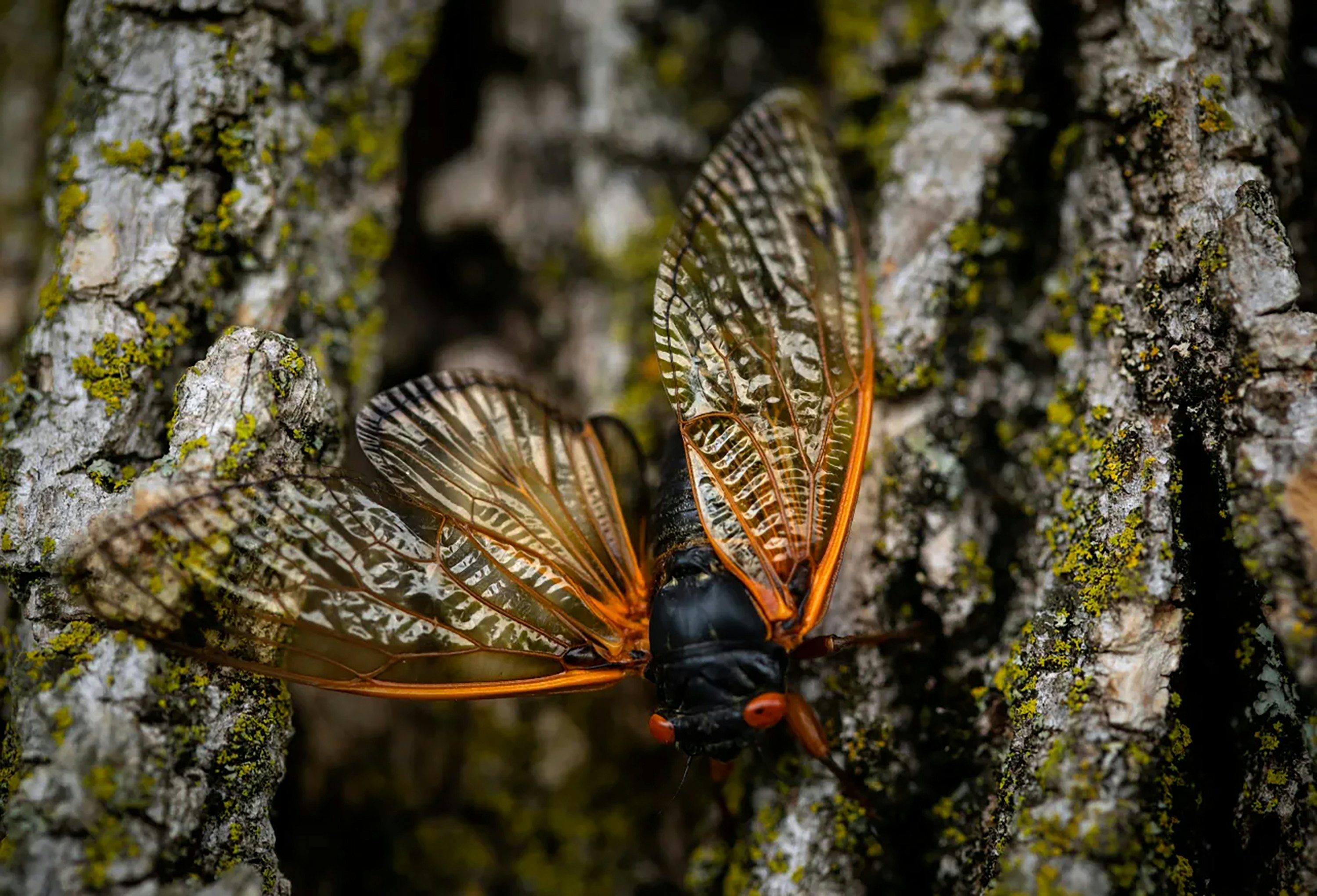
Cicadas, it turns out, pee like racehorses. Tiny, shrieking, red-eyed racehorses.
Next time you complain about your day at work, spare a thought for the team of entomologists at Georgia Tech who recently spent a lot of time watching cicadas pee (and writing equations to describe the physics of the process). And yes of course there’s video.
Most insects discreetly ooze occasional tiny droplets of fluid, but cicadas just secured the title of smallest animal that pees in a jet. Georgia Tech researchers Elio Challita and Saad Bhamia recently published their work in the Proceedings of the National Academy of Sciences.
As Challita and Bhamia put it in their recent paper, cicadas “possess the capability for jetting fluids through remarkably small orifices.”
Word of the Day: “Anal Jets”
Imagine for a moment that you’re a tiny creature, weighing in at just 2 grams (about as much as two raisins), but every day you drink about 300 times your own body weight in tree sap. The tree sap is about 95 percent water, so you have to go through tremendous amounts of it just to get enough actual nutrients to survive. And the rest has to go someplace, so besides the Kafakaesque horror of your new existence, you also have to pee a lot. In starkly mathematical terms: About 21 ounces of fluid a day has to escape through an orifice less than a hundred thousandth of an inch wide.
Peeing in jets, or streams, is something biologists didn’t previously think such small creatures could actually do. But it turns out that the length of a cicada’s hindgut reduces the amount of pressure needed to overcome the surface tension and fire a jet of urine out the cicada’s back end — or “anal jet,” which is the actual, technical entomological term (the more you know). The result is a tiny 4 mile-per-hour stream of bug pee, about a hundred thousandth of an inch wide, lasting for a few tenths of a second. (Because we know you’re wondering, cicada pee has about a third the velocity of human pee.)
Tiny Physics at Work
Fluid dynamics — the physics of how liquids move — gets complicated at very small scales. The short explanation is that most insects have very tiny plumbing, and they’re dealing with very tiny amounts of fluid, and surface tension causes those tiny amounts of fluid to form little droplets. This also takes less energy, and many insects just kick the pee droplets off (or catapult them away, like leaf-dwelling insects called sharpshooters).
Cicadas, as noted, have to pee a whole lot. If they expended all their energy kicking drops of pee off their legs, they’d have to drink even more sap, then pee even more, and then kick even more. Rinse and repeat. It just wouldn’t work.
“This adaptation not only proves energetically efficient but also suits their need to process large volumes of nutritionally poor food,” write Challita and Bhamia.
The Really Weird Part
The jets themselves aren’t even the wildest part, though.
“Adult cicadas have been reported to spray incoming intruders with their anal jets when disturbed,” write Challita and Bhamia. So if you plan to disturb a cicada, be careful about which way it’s pointed.
Young cicadas (the ones we don’t usually see, because they’re lurking underground, drinking sap directly from tree roots while they await the time to emerge and scream in the sunlight once more) get up to even weirder things with their pee. Challita and Bhamia report that cicada nymphs use “the copious amount of their watery excretion” to make soil stick together, so they can use it to build underground tunnels and chambers with their pee. Picture a bunch of pale cicada nymphs, in the darkness beneath your feet, building whole underground tunnel networks out of mud they made with their pee.
What can we say except, “You’re welcome?”
Back on the surface, cicadas’ prodigious pee production is an overlooked piece of their dramatic impact on the ecosystems into which they emerge, shrieking, every several years.
“With their high population densities during emergence, the ecosystem impact of their fluid excretion is both substantial and largely unknown,” Challita and Bhamia write.







